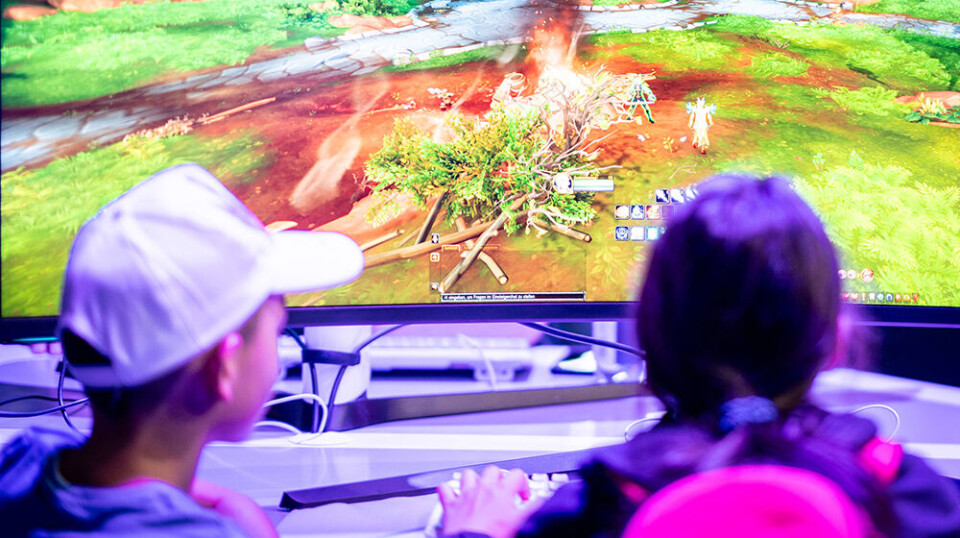THIS CONTENT IS BROUGHT TO YOU BY University of Oslo - read more

Queer characters in computer games: Greater diversity than before, but room for much more
In the last 20 years, an increasing number of nuanced queer characters have entered computer games. But there is still some way to go before queer representation reflects the real world.
There have been queer players for as long as people have been playing computer games. But this has not been reflected in the characters that appear in the games.
“Queer characters can be found in games from around the mid-1980s, but mostly in subsidiary and stereotypical roles,” researcher Joakim Johansen Østby at the Department of Media and Communication at the University of Oslo says.
This trend continued until around 2005. Since then, things have changed, somewhat in line with changes in society outside the gaming world.
Only a loud minority that reacts negatively
“We don't see much of that stereotypical treatment anymore. The industry select more diverse characters and are headed towards more progressive inclusion,” Østby says.
He has just completed a study on diversity and the inclusion of queer people in computer games.
One of the better examples is The Last of Us Part II, which was launched in 2020. The first game was a smash hit and has subsequently become a TV series. The sequel features a lesbian main character.
“Some people had a negative reaction, but I don’t actually think it mattered very much. It sold four million copies in the first weekend after its release,” he says.

“I believe most people think that it's totally fine, or they don’t really give it much thought. And there will always be a loud minority who think it’s awful and make a lot of fuss,” Østby says.
Working on his report entitled Queer Game Developers and Gamers (link in Norwegian), he has interviewed queer people among those who create the games and those who play them.
Important for feeling included
The most important thing for the players is that queerness and queer diversity is represented in the games so that they can play characters that they relate to, and feel included.
“It is important for queer people to be able to express themselves, feel that they are seen, and adapt things to their own wishes and needs,” Østby says.
Queerness is expressed in a variety of ways, and this is also reflected among the people interviewed. However, it is not always that important to them to have their own particular type of queerness represented.
“My informants are quite openminded about what kind of queerness they want. They seem interested in seeing diversity in that area as well. The general rule is that they want stories that are realistic and nuanced,” he says.
In addition, both players and developers are keen for queerness to be a natural part of the games in order to help counteract prejudice and stereotypes in straight people.
Østby hopes that this will be incorporated in the government's forthcoming computer game strategy (link in Norwegian).
“Norway is a liberal country, but our gaming industry hasn't quite managed to keep up in this respect. I hope that my report can shed light on the fact that this is something that they can invest in, and that Norway can contribute to set the premises in this field as well,” he says.
Queerness is hidden behind freedom of choice
A common method of representing queer people in games has been to add options whereby players can express different aspects of queerness.
“An increasing number of developers are moving in the direction of offering choices that open up more possibilities. This is common, for example, in the role-playing game genre where players are often given a certain amount of freedom to choose things themselves, for instance the appearance and gender of the main characters or options that can be chosen in the course of the game,” Østby says.
But it also means that straight players who don't make those choices can complete the game without seeing any signs of queerness.

“In many ways, this means that you can avoid interacting with queer characters. Due to their own personal choices, they may not come across many of the queer storylines,” Østby says.
He would like to conduct more detailed research on this group of players. Do they experience queerness as being part of the games? Are they even aware of it?
“Since so many of my queer informants emphasise the importance of representation in increasing empathy and understanding, it would be fun to follow this up by talking to straight players about how they experience the same kind of representation,” he says.
Advice for developers
Although the trend is towards greater openness and more queerness in the gaming world, Østby believes that there is considerable room for improvement. Based on the interviews contained in his report, he has several pieces of advice for Norwegian game developers:
“If you are going to develop a queer story, make sure you include some queer people who can contribute towards that development. At least, if you're not queer yourself,” he says and continues:
“And in games where players can choose their own characters, it is helpful if you are even freer to choose a combination of gender and gender expression, and any choice of pronouns yourself where possible.”
Also, developers should not worry about offending what has traditionally been seen as the core audience: white men between the ages of 18 and 30.
“This has been an important segment. This group, which spends a lot of time gaming, has considerable purchasing power, but they are in fact just a subgroup among all those who play,” Østby points out.
He is optimistic and recognises signs of change. The industry itself, at least much of it, has taken a stand.
“In the past, the gaming industry may have been more cautious about speaking out, but now they are clearly stating that the games must be more diverse. This is important for the developers themselves, and it is also important for gamers, employees and society at large. Anyone who doesn’t like it will just have to learn to live with it,” says Østby.
Reference:
Østby, J.J. Skeive spillutviklere og spillere: mangfold og inkludering av skeive i dataspill, spillutvikling og spillkulturen (Queer Game Developers and Gamers. Diversity and Inclusion of Queers in Computer Games, Game Development, and Gaming Culture), Department of Media and Communication, University of Oslo, 2023.

This content is paid for and presented by the University of Oslo
This content is created by the University of Oslo's communication staff, who use this platform to communicate science and share results from research with the public. The University of Oslo is one of more than 80 owners of ScienceNorway.no. Read more here.
More content from the University of Oslo:
-
Queer opera singers: “I was too feminine, too ‘gay.’ I heard that on opera stages in both Asia and Europe”
-
Putin’s dream of the perfect family
-
How international standards are transforming the world
-
A researcher has listened to 480 versions of Hitler's favourite music. This is what he found
-
Researcher: "AI weakens our judgement"
-
New, worrying trend among incels, according to researcher




































